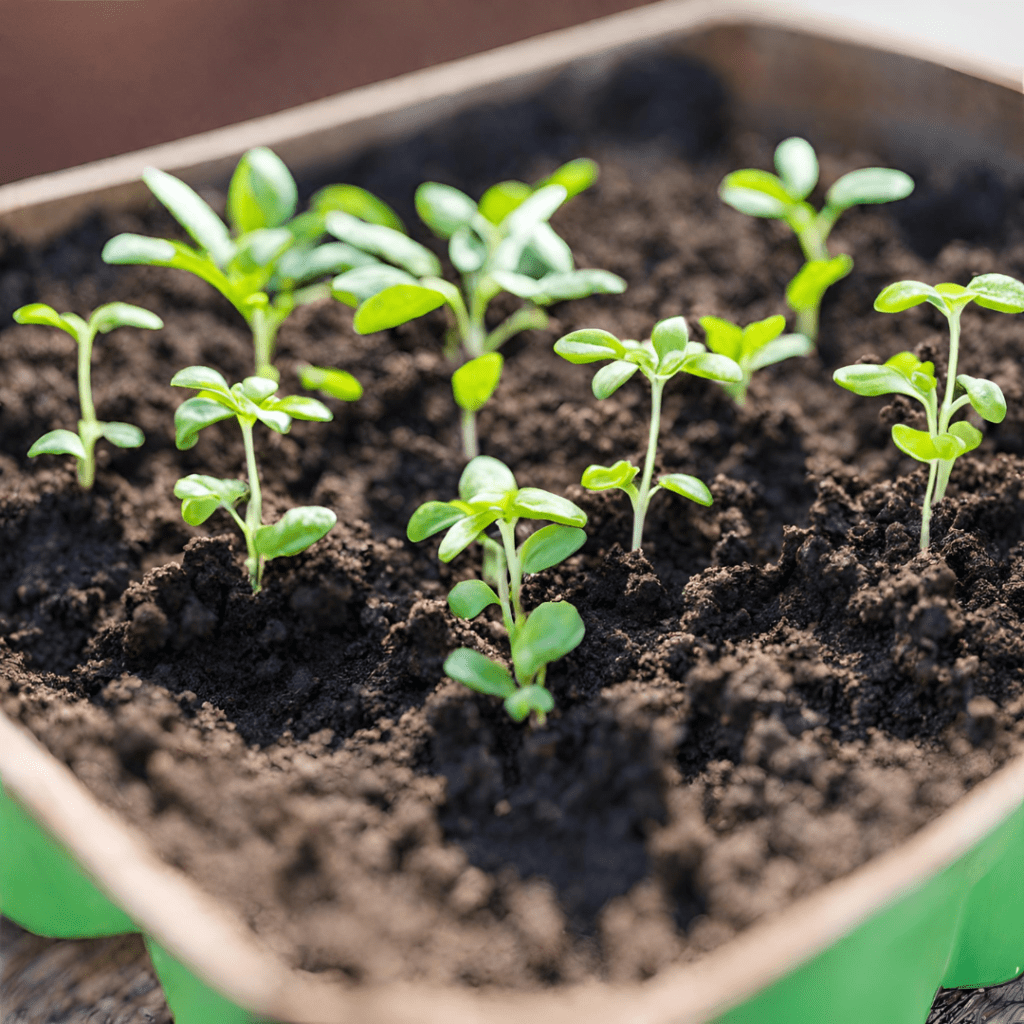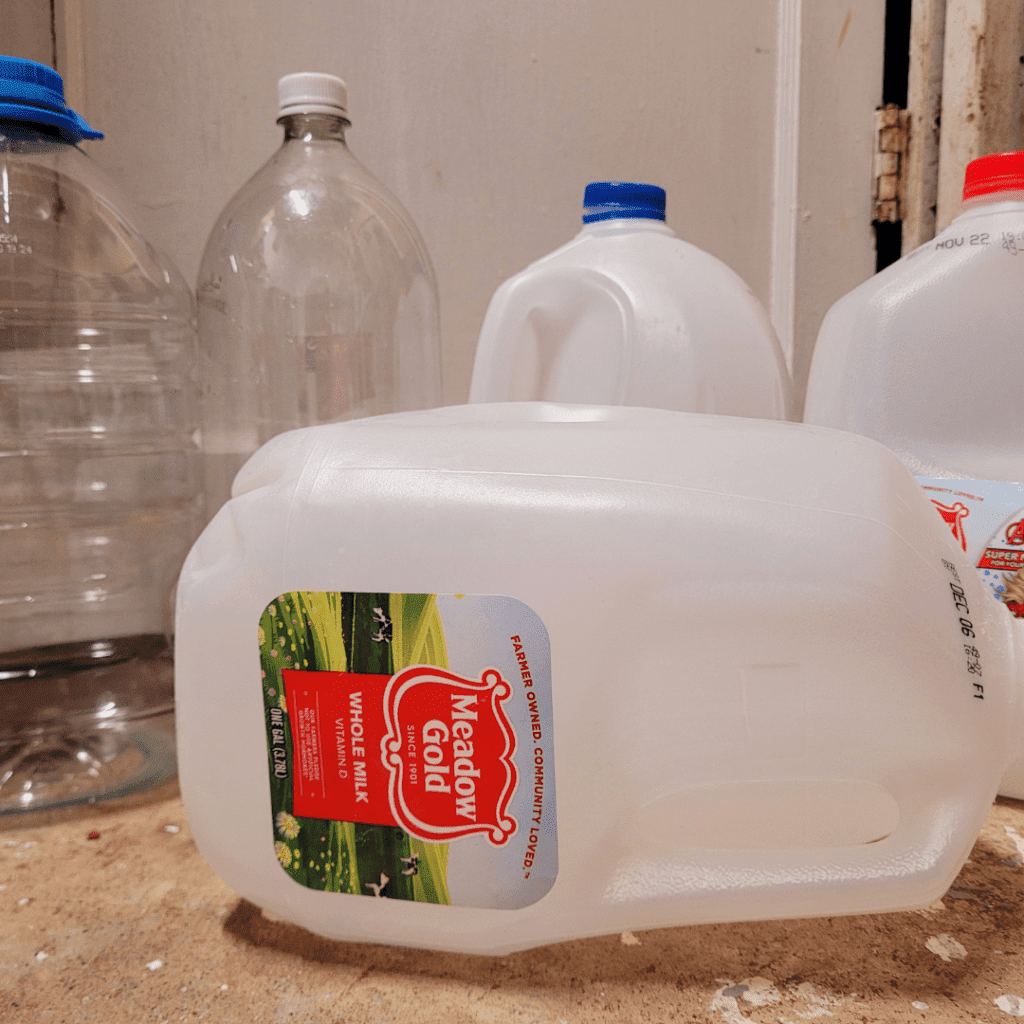Getting started with winter sowing is easier than you think, and this ultimate guide will walk you through everything you need to know. From choosing the right containers and soil amendments to selecting the best seeds, winter sowing allows you to grow strong, resilient seedlings without grow lights or expensive setups. Learn how to create a self-sustaining system that saves time, money, and space while giving your spring garden a head start.
Winter sowing is a gardening technique that allows you to start seeds outdoors during the winter months, leveraging the natural processes of cold stratification and germination. This method offers numerous benefits, including an extended growing season, cost-effectiveness, and the opportunity to grow cold-hardy plants. Whether you’re a seasoned gardener or a beginner, this comprehensive guide will provide you with all the information you need to successfully winter sow your favorite plants and enjoy a bountiful garden. Let’s dive in!
This is a pinnable post. Tap or hover over any image in this post to pin to your Pinterest Boards.
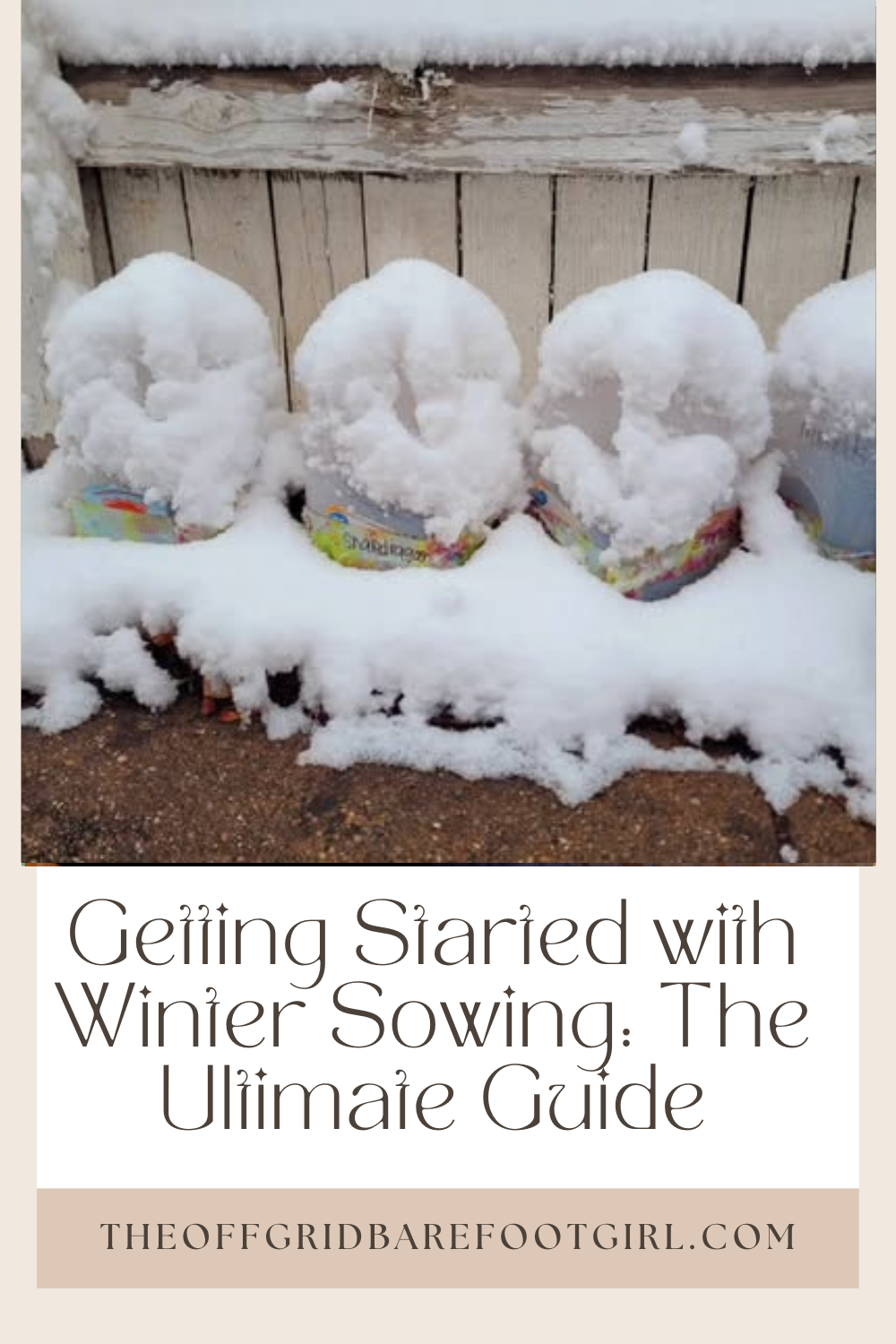
Introduction to Winter Sowing
What is Winter Sowing?
Winter sowing is like sending your plant babies off to winter camp. It’s a gardening technique that allows you to start your seeds outdoors during the winter months. Instead of pampering them indoors, you let Mother Nature do her thing. It’s a hands-off approach that takes advantage of the natural benefits of cold, snow, and frost.
History and Origins of Winter Sowing
Winter sowing is not some fancy new gardening fad. It has been practiced for centuries, long before Instagram gardening influencers took over our feeds (which is great to see many young people doing!) The technique is believed to have originated in Eastern Europe and Siberia, where resourceful gardeners needed a way to grow hardy plants despite the harsh winters. So, they devised this brilliant method of sowing seeds in containers and letting winter work its magic.
Benefits and Advantages of Winter Sowing
Extended Growing Season
Winter sowing is like giving your plants a head start—except without the pressure of an overbearing parent (a grow light and us staring at them to make their move!) By starting your seeds in winter, you’re essentially tricking them into thinking it’s already spring. This means you get a jump on the growing season and can enjoy your flourishing garden earlier than your neighbors.
Cost-Effectiveness
Who doesn’t love saving a few bucks? With winter sowing, you can ditch those expensive seed-starting kits and grow lights. All you need are some simple materials like recycled containers, soil, and seeds. It’s a budget-friendly way to get your garden growing.
Natural Germination and Adaptation
Winter sowing allows your plants to experience the full range of seasonal conditions, just like they would in the wild. This helps them develop stronger roots and better adapt to their environment. Plus, the natural freezing and thawing cycles help to break down seed coats and enhance germination.
Selecting the Right Seeds for Winter Sowing
Choosing Cold-Hardy Plants
Not all plants are cut out for winter sowing. You’ll want to select seeds that are hardy enough to withstand frost and cold temperatures. Look for plants that are native to your region or have a reputation for being tough cookies.
Annuals versus Perennials
Deciding between annuals and perennials is important and a great idea to include both types of plants in your garden. Annuals complete their life cycle in one growing season, while perennials come back year after year. Both can be winter sown, but keep in mind that perennials require a longer commitment.
Considering Region and Climate
Not all winters are created equal. The weather in Florida is a far cry from that in Minnesota (sorry, Minnesota). So, consider your region’s climate and the specific conditions your plants will experience. This will help you choose seeds that are more likely to survive and thrive in your neck of the woods.
Preparing Containers and Creating a Winter Sowing Setup
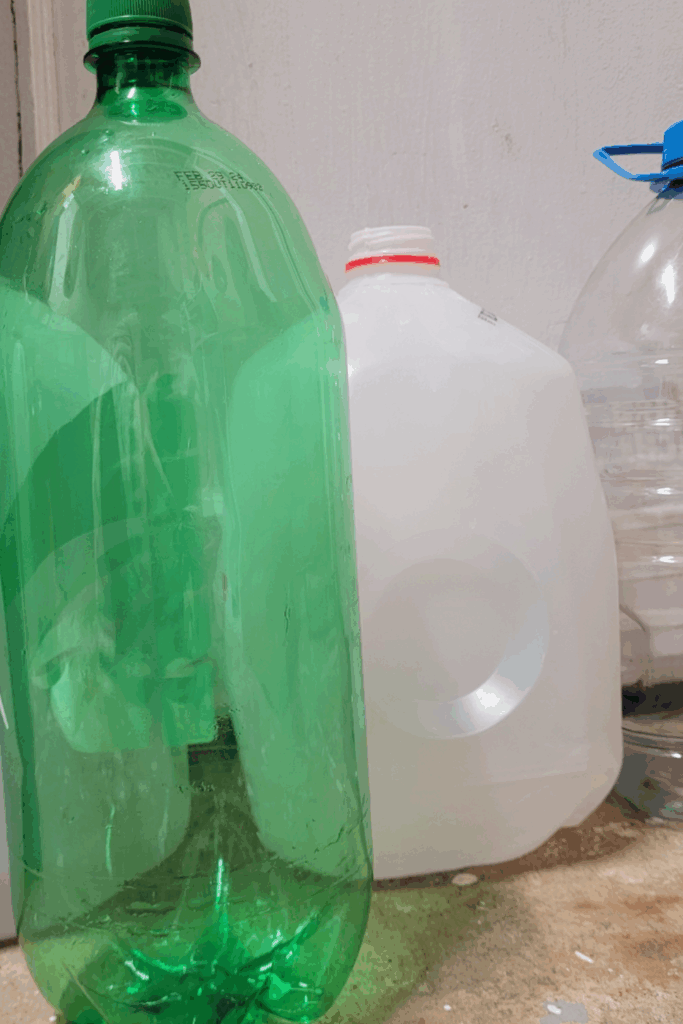
Choosing Containers for Winter Sowing
You don’t need fancy pots or expensive containers for winter sowing. In fact, the thrift store and recycling bin are your best friends. Look for containers with clear lids or even plastic food containers that you can repurpose. Just make sure they have drainage holes to prevent your seeds from turning into swamp monsters and are clear for sunlight to enter. I like to collect clear milk jugs, tea jugs, 2-liter bottles, and those 64-ounce 100% juice my kids love to drink to use for my winter sowing projects.
Creating Proper Drainage
Nobody likes wet feet, especially plants. To avoid waterlogged roots, make sure your containers have adequate drainage. You can create holes at the bottom or along the sides using a drill or a hot skewer (just don’t burn yourself!). This way, excess water can escape, and your seeds can breathe.
Choosing the Right Soil Mix
Your plants deserve some high-quality soil, just like we deserve grade-A snacks. Opt for a well-draining mix that’s suitable for seed starting. You can buy a pre-made mix or make your own by combining equal parts of peat moss, vermiculite, and compost. Remember, happy soil means happy plants.
Setting up a Winter Sowing Area
Find a cozy spot in your garden where your containers can hang out during the winter. It could be a sunny corner or a sheltered spot beneath a tree. Just make sure it’s easily accessible so you can check on your seedlings as they grow. And don’t forget to label your containers; you don’t want to play a game of plant roulette later on.
Winter Sowing Techniques and Tips
Seed Stratification Methods
Winter sowing is a great way to get a head start on your gardening, but some seeds need a little extra help to germinate. This is where seed stratification comes into play. It sounds fancy, but it’s really just a fancy term for giving your seeds a simulated winter. You can do this by placing your seeds in a damp, well-draining clear container, then sealing the lid with duct tape and placing them outside, even if it is snowing!
Sowing and Labeling Seeds
When it comes to sowing your winter-sown seeds, the key is to keep things organized. Labeling is your best friend here. You don’t want to be playing a guessing game when your seedlings start sprouting. Use popsicle sticks or small tags to mark your containers, and don’t forget to jot down the name of the plant and the sowing date. Trust me, future you will thank yourself for this small act of genius.
Protecting Seeds from Wildlife and Pests
Now, let’s talk about the not-so-fun part of gardening: dealing with wildlife and pests. Your seeds are like a tasty buffet for critters, so it’s important to take measures to protect them. You can use netting, chicken wire, or even repurposed plastic totes with holds drilled into the bottom to create a barrier around your containers to use as a mini greenhouse. This will keep those pesky squirrels and curious cats away from your precious seeds.
Watering and Moisture Management
When it comes to watering your winter-sown seeds, it’s all about finding the right balance. You don’t want your seeds to dry out, but you also don’t want them to drown. The best approach is to keep the soil consistently moist, but not waterlogged. A light misting with a spray bottle or a gentle watering can do the trick. Just make sure to check the moisture levels regularly and adjust accordingly. And remember, a happy seed is a hydrated seed!
Caring for Winter Sown Seeds
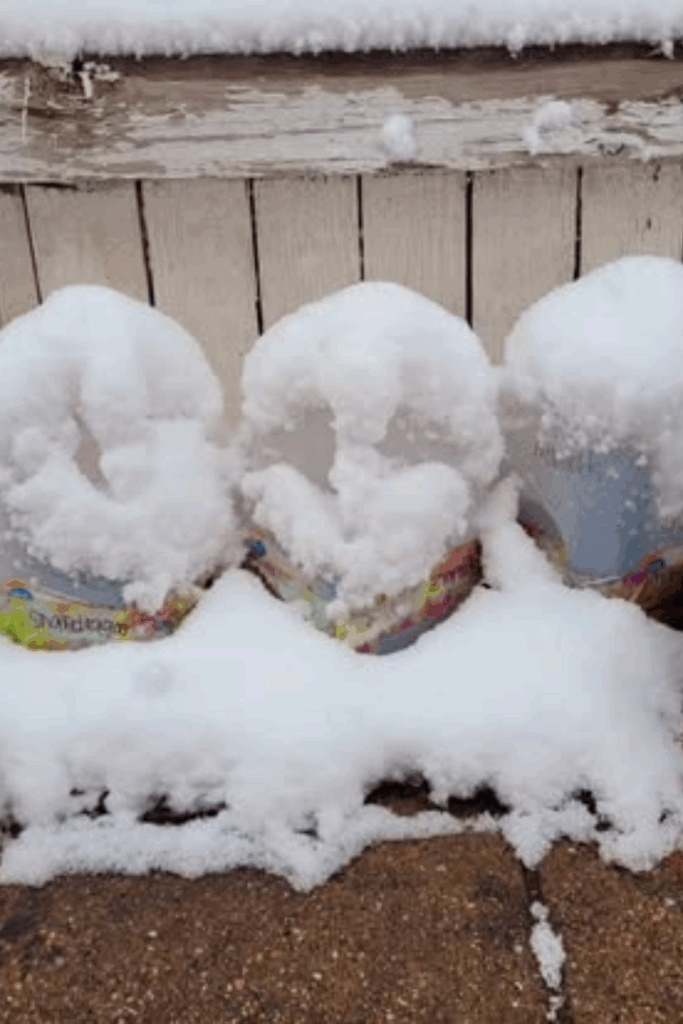
Monitoring Seedlings’ Progress
Congratulations, you have tiny sprouts! Now it’s time to play the role of a proud plant parent and closely monitor their progress. Keep an eye on how your seedlings are growing, and make sure they’re getting enough sunlight and water. Look out for any signs of distress or overcrowding, and take action if needed. It’s like being a detective, but with plants instead of clues.
Providing Adequate Sunlight
Sunlight is like fuel for your seedlings, so make sure they’re getting their daily dose of Vitamin D. Find a sunny spot in your yard or garden where they can soak up those rays. Just be careful not to roast them in direct sunlight or leave them in a dark corner. Remember, plants are like introverts – they need their alone time, but they also crave some social interaction.
Thinning and Transplanting Seedlings
As your seedlings grow, they might start competing for space and resources. It’s like a plant version of The Hunger Games. To ensure their survival, you’ll need to thin them out and give them room to spread their roots. It can feel like playing favorites, but don’t worry, it’s for the greater good. Be gentle when transplanting them into larger containers or your garden beds, but only when the timing is right!
Fertilizing and Nutrition for Seedlings
Just like us, plants need proper nutrition to thrive. Once your seedlings have settled into their new homes, it’s time to feed them. You can use a balanced liquid fertilizer or opt for organic alternatives like diluted compost tea. Just remember, moderation is key. Overfeeding can do more harm than good, so follow the instructions on the fertilizer package and resist the urge to turn your seedlings into bodybuilders.
Transplanting and Hardening Off Winter Sown Seedlings

Preparing Seedlings for Outdoor Transplanting
Your seedlings have graduated from their cozy containers and are ready to brave the great outdoors. But hold your horses! Before you unleash them into the garden, they need a little preparation. Gradually acclimate them to outdoor conditions by removing the container tops for short periods of time, gradually increasing their exposure.
Gradual Exposure to Outdoor Conditions
Your seedlings have been sheltered all this time, so they need some time to adjust to their new surroundings. Start by placing them in a sheltered spot away from direct sunlight and strong winds. Then, gradually increase their exposure over the course of a week or two.
Transplanting Seedlings to Garden Beds
The big day has finally arrived – it’s time to plant your seedlings in their permanent homes. Choose a sunny spot in your garden beds, loosen the soil, and dig holes that are deep enough to accommodate the roots. Gently remove the seedlings from their containers, being careful not to disturb their delicate roots, and place them in the holes. Backfill the soil, gently firm it around the seedlings, and give them a good drink. Voila, your little seedlings have found their forever home!
Troubleshooting Common Winter Sowing Problems
Seedlings Failing to Germinate
Uh-oh, it seems like your seeds are playing hard to get. If your seedlings are refusing to show up to the party, there could be a few reasons for this. It could be that the seeds were not viable to begin with, or maybe they didn’t get enough moisture or sunlight. Don’t lose hope just yet! Try adjusting the conditions, give them a little pep talk (a motivational speech never hurts), and be patient. Remember, good things come to those who wait. Keep in mind that winter sowing takes longer than indoor sowing. It will be months before you start to see any signs of life in those containers!
Mold or Damping Off Issues
Mold and damping off can be pesky problems that can ruin your seedling party. Excessive moisture and poor air circulation are usually the culprits here. To prevent mold and damping off, make sure your containers have drainage holes and provide good airflow by removing any plastic covers or vents. If you spot any mold, remove the affected seedlings and adjust the moisture levels.
Dealing with Extreme Weather Conditions
Mother Nature can be quite unpredictable, and extreme weather conditions can put a damper on your winter sowing endeavors. If you’re expecting a frost, take precautions to protect your seedlings. Cover them with frost blankets or shade cloth when necessary. More than likely, they will be fine in those little plastic containers, even if they get buried in snow!
Conclusion
With the knowledge and techniques shared in this ultimate guide to winter sowing, you are well-equipped to embark on your own winter sowing adventure. By embracing this natural and cost-effective method, you can take advantage of the winter months to start a wide variety of plants and extend your gardening season. Remember to choose the right seeds, prepare your containers, and provide proper care for your winter-sown seedlings. Don’t be discouraged by any challenges you may encounter; troubleshooting common problems is part of the process. So go ahead, grab your seeds, and get started with winter sowing – it is a fun winter adventure!
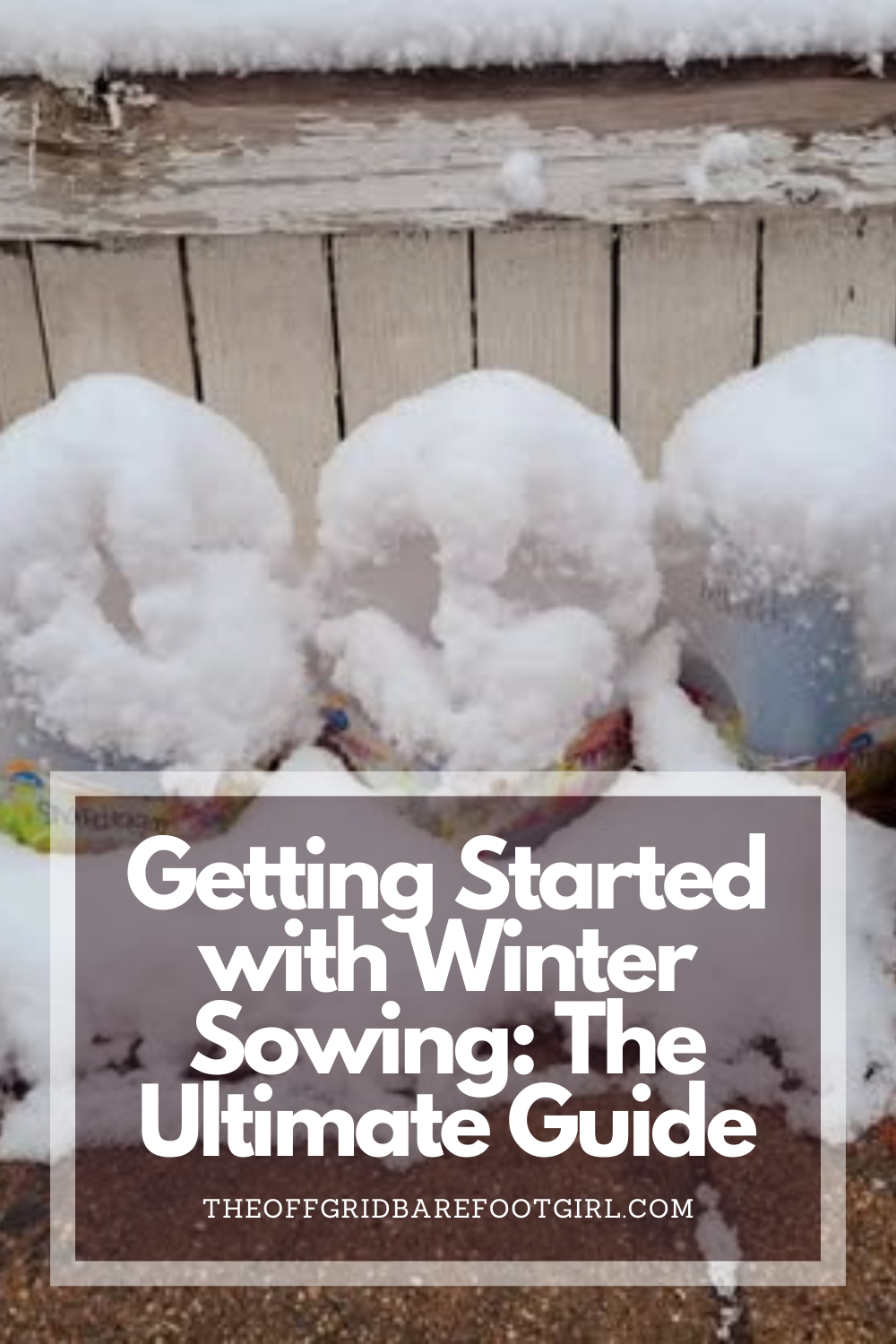
Frequently Asked Questions
1. Can I winter sow any type of plant?
While winter sowing is suitable for a wide range of plants, it is generally recommended for cold-hardy plants, including many perennials and certain annuals. It’s important to choose seeds that are well-suited for your climate and region. Some delicate or heat-loving plants may not thrive through winter sowing.
2. Do I need any special equipment for winter sowing?
No, you don’t need any special equipment for winter sowing. The beauty of this method is its simplicity. You can repurpose common containers like milk jugs, soda bottles, or even takeout containers. However, ensuring proper drainage and ventilation in your containers is essential for successful winter sowing.
3. How do I protect my winter-sown seeds from wildlife?
Protecting your winter-sown seeds from wildlife can be a concern. You can use various techniques such as placing wire mesh or netting over your containers or placing them inside protective enclosures. Keep an eye out for any signs of nibbling or digging and adjust your protective measures accordingly.
4. Can I start winter sowing in any climate or region?
Winter sowing is adaptable to different climates and regions, although the specific timing and plant choices may vary. It is particularly well-suited for regions with cold winters. Adjusting your sowing and transplanting dates based on your local climate and frost dates will help ensure the success of your winter sowing endeavors.
Summary
I hope I have inspired you to try your skills at winter sowing with these tips and products.
If you were encouraged by this post, I invite you to check out my FREE Printables Page for fun free printables, planners, and charts.
ENTER MY FREE Printables Page HERE
Here are some more of my winter gardening inspiration posts to check out!
Why Winter Sowing is a Game Changer for Successful Spring Planting
The Benefits of Successful Winter Sowing for Vegetables in Containers
The Ultimate Guide to Choosing the Best Soil for Winter Sowing
Planning Your Garden: How to Plan a Vegetable Garden: Expert Green Thumb Tips!
Winterizing the Garden: How to Winterize Your Vegetable Garden: Step-by-Step Checklist
Mulching the Garden: How to Make Leaf Litter Mulch
How to Grow a Fall Garden: 9 Best Fall Crops
Blessings,
The Off Grid Barefoot Girl



